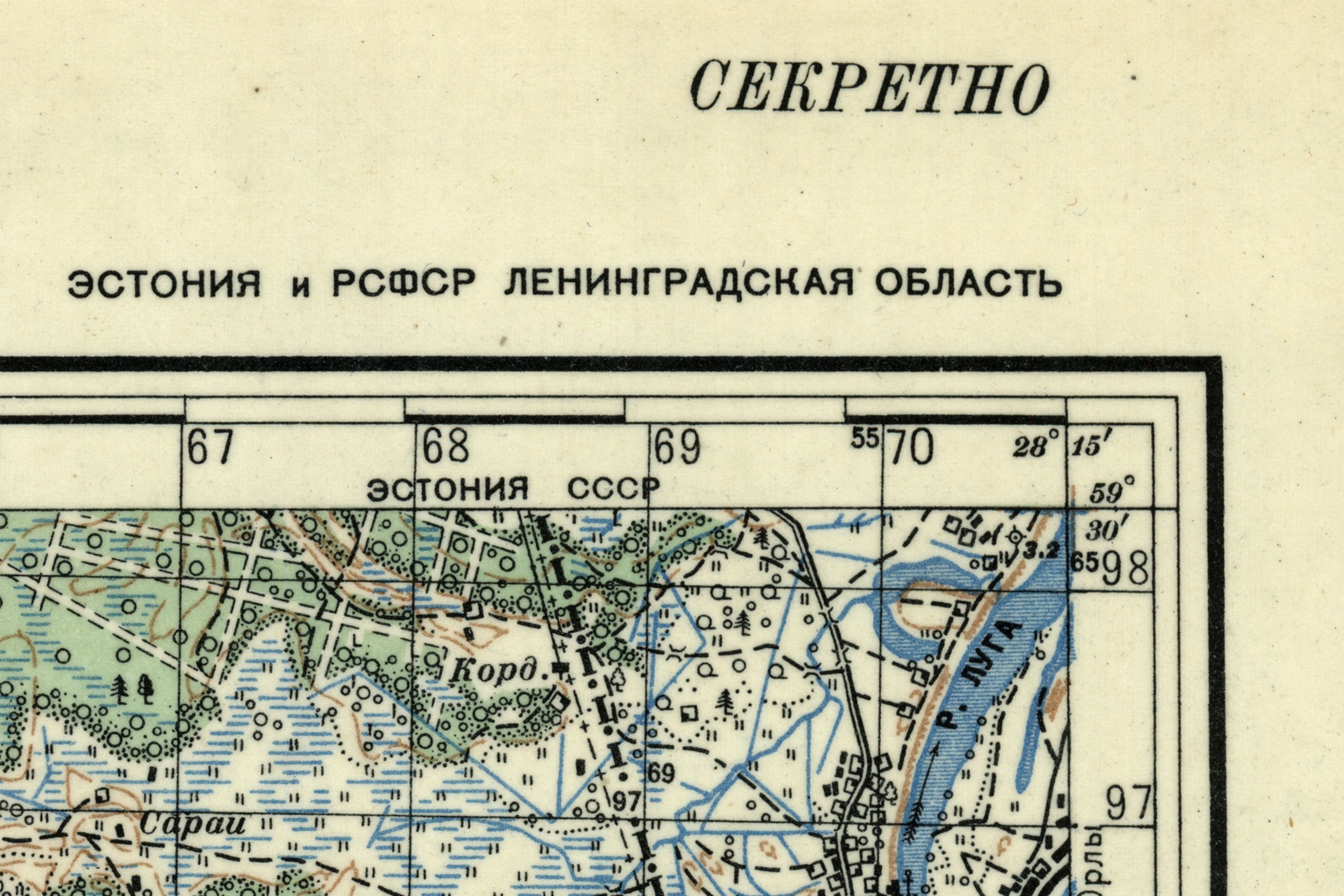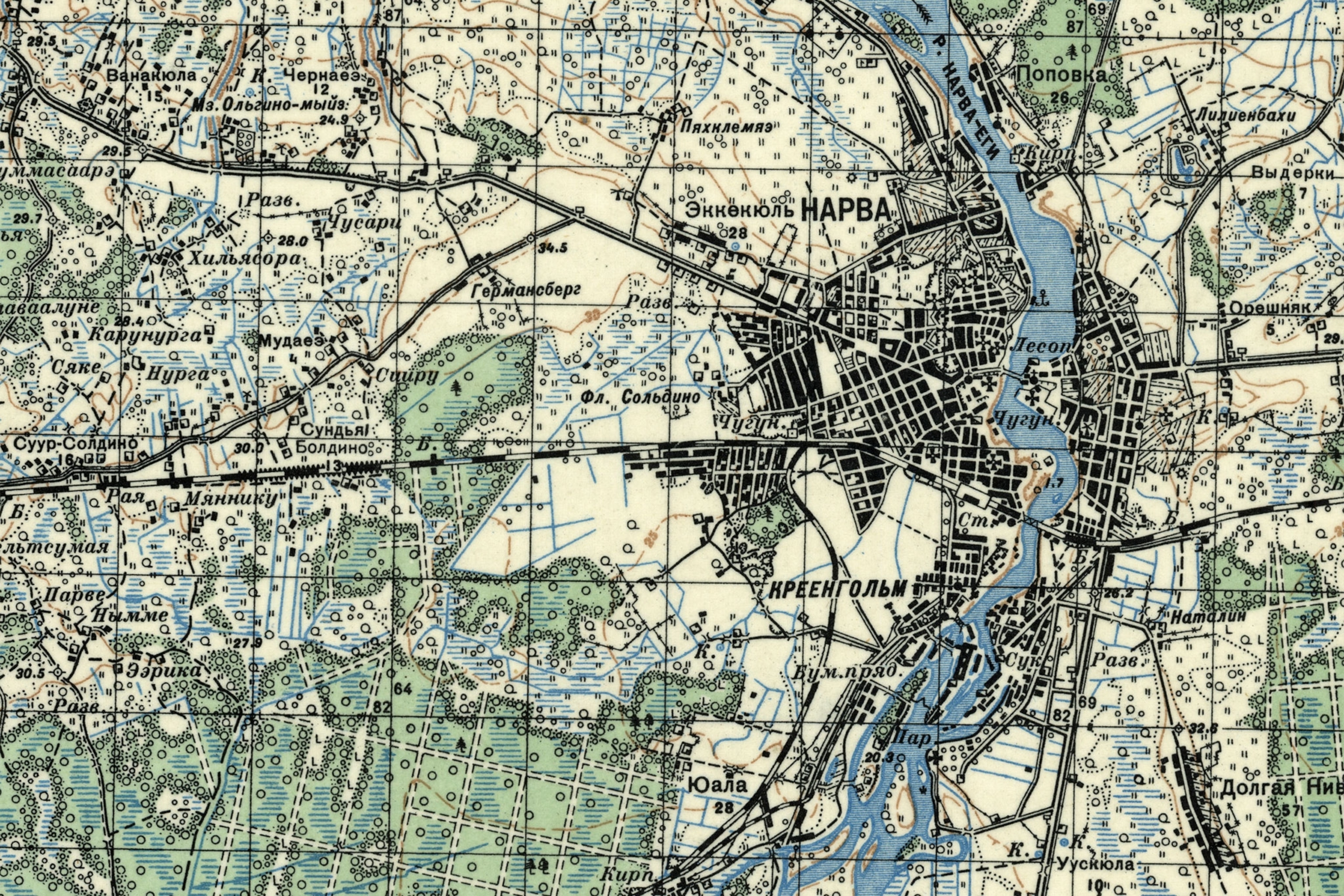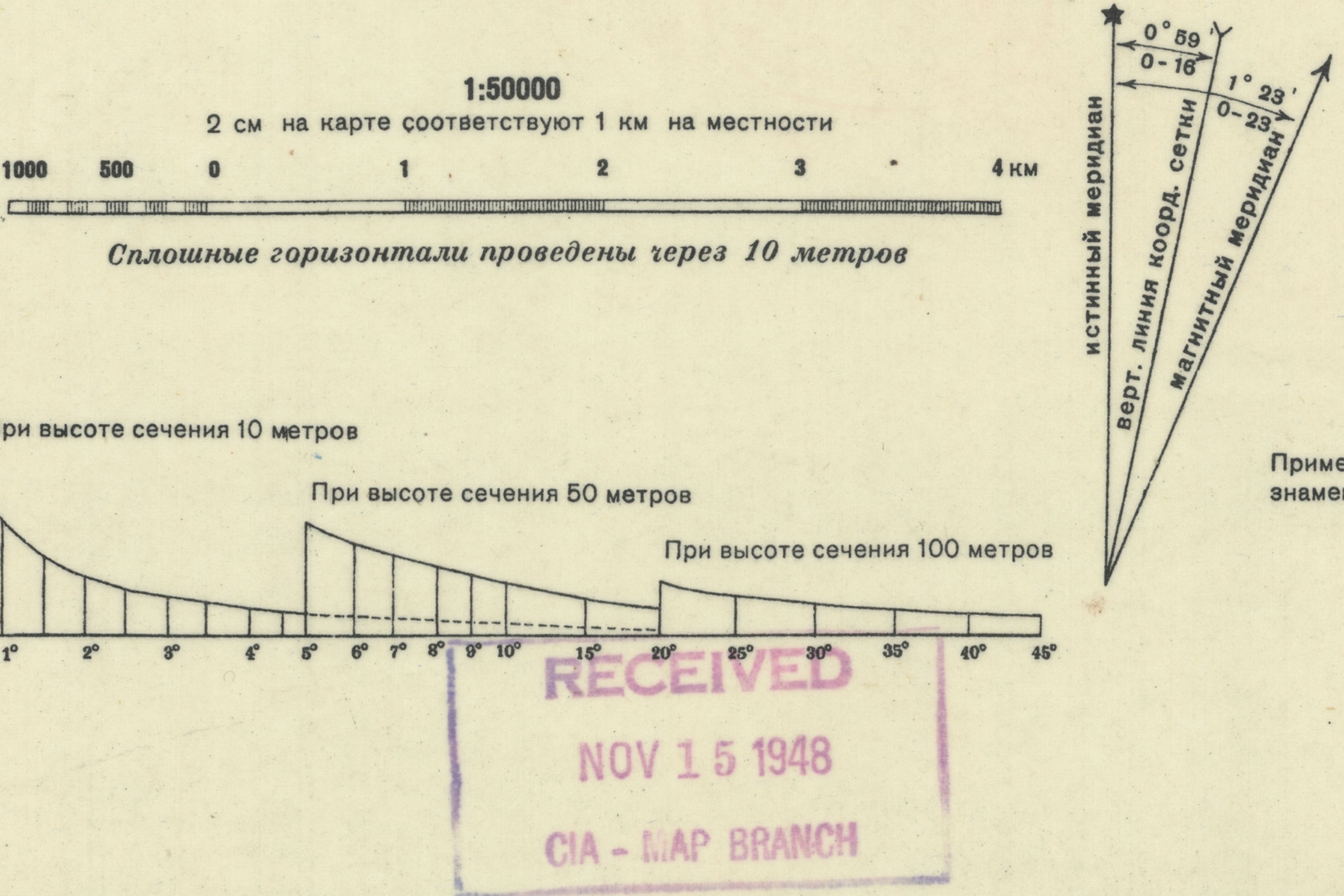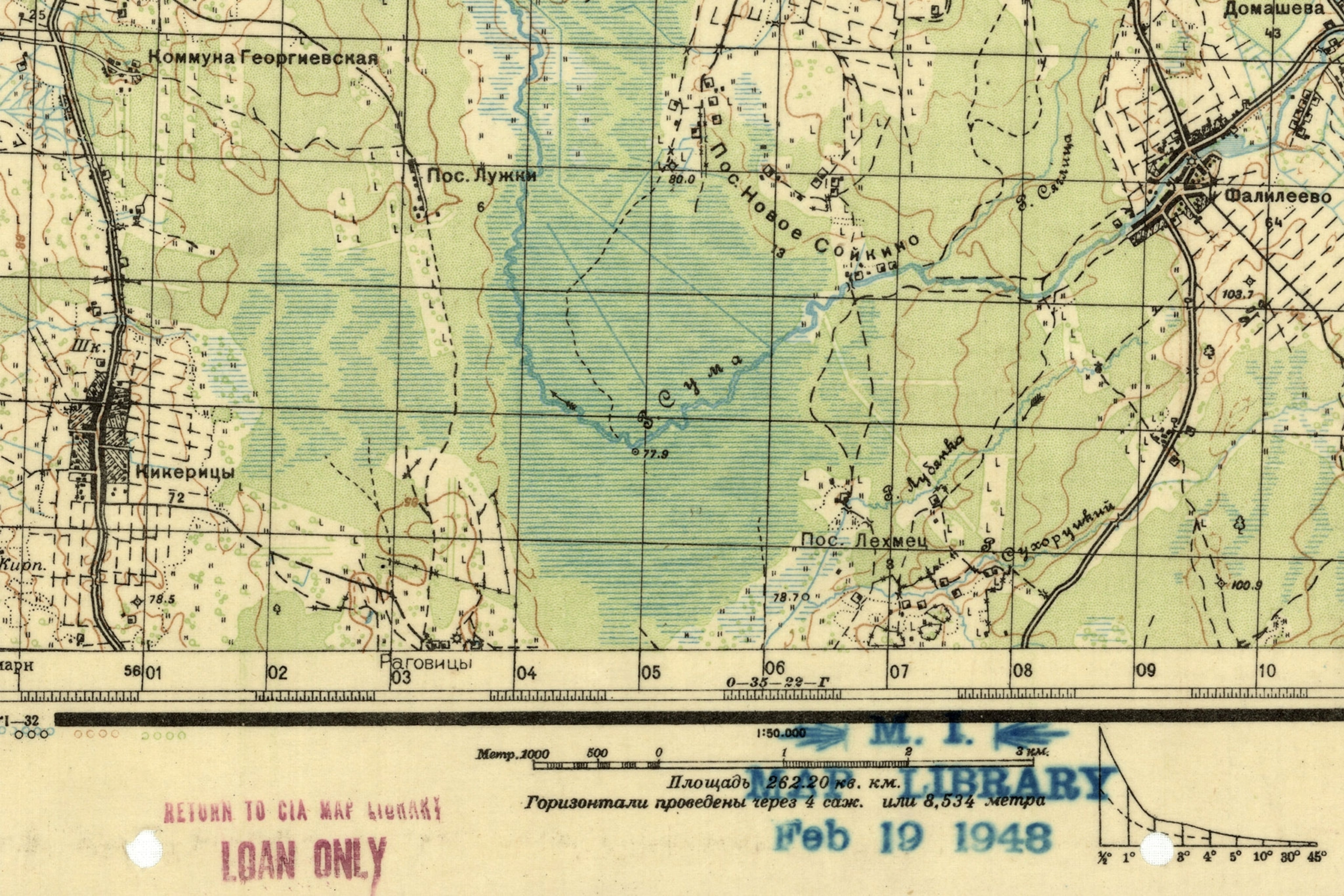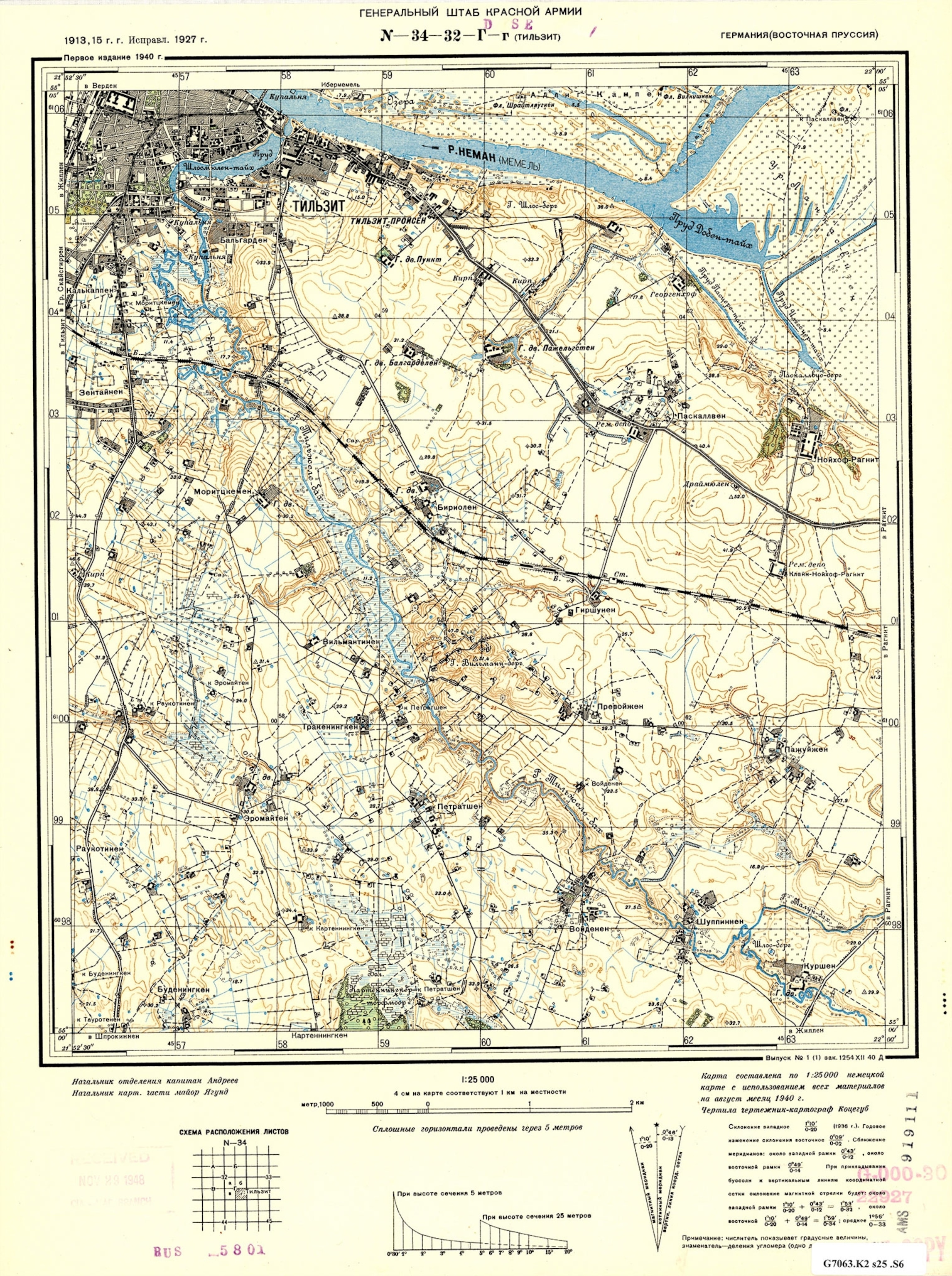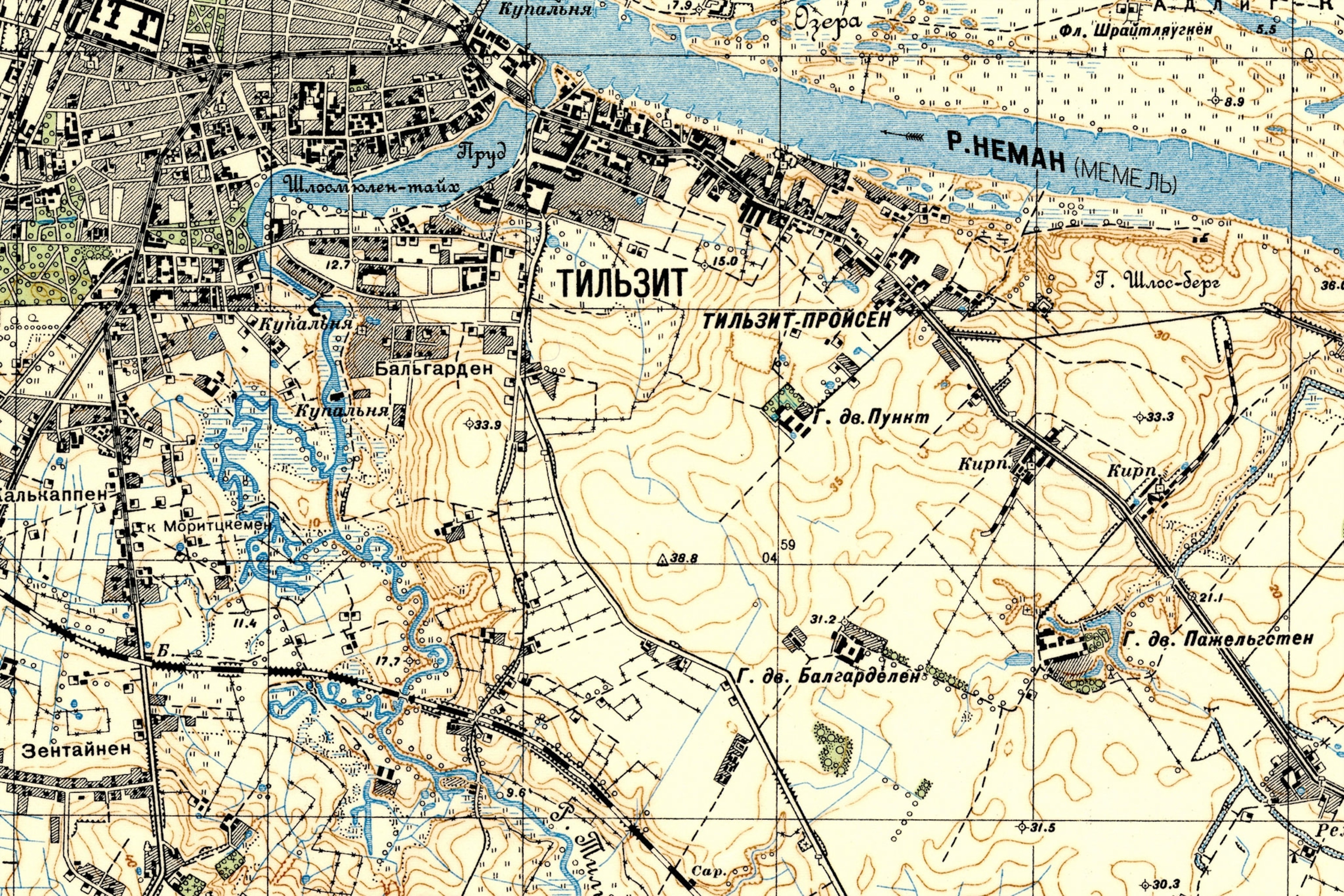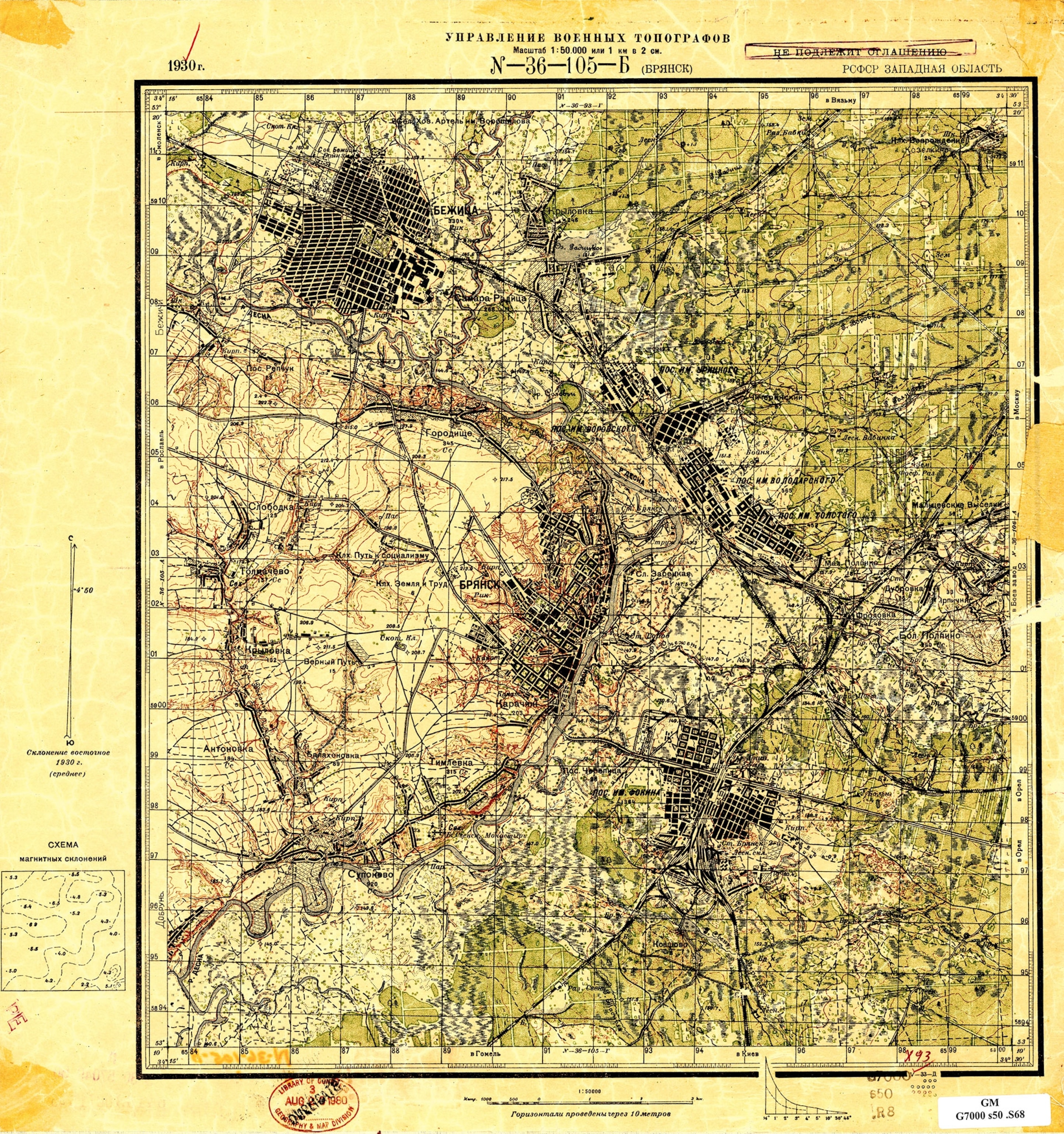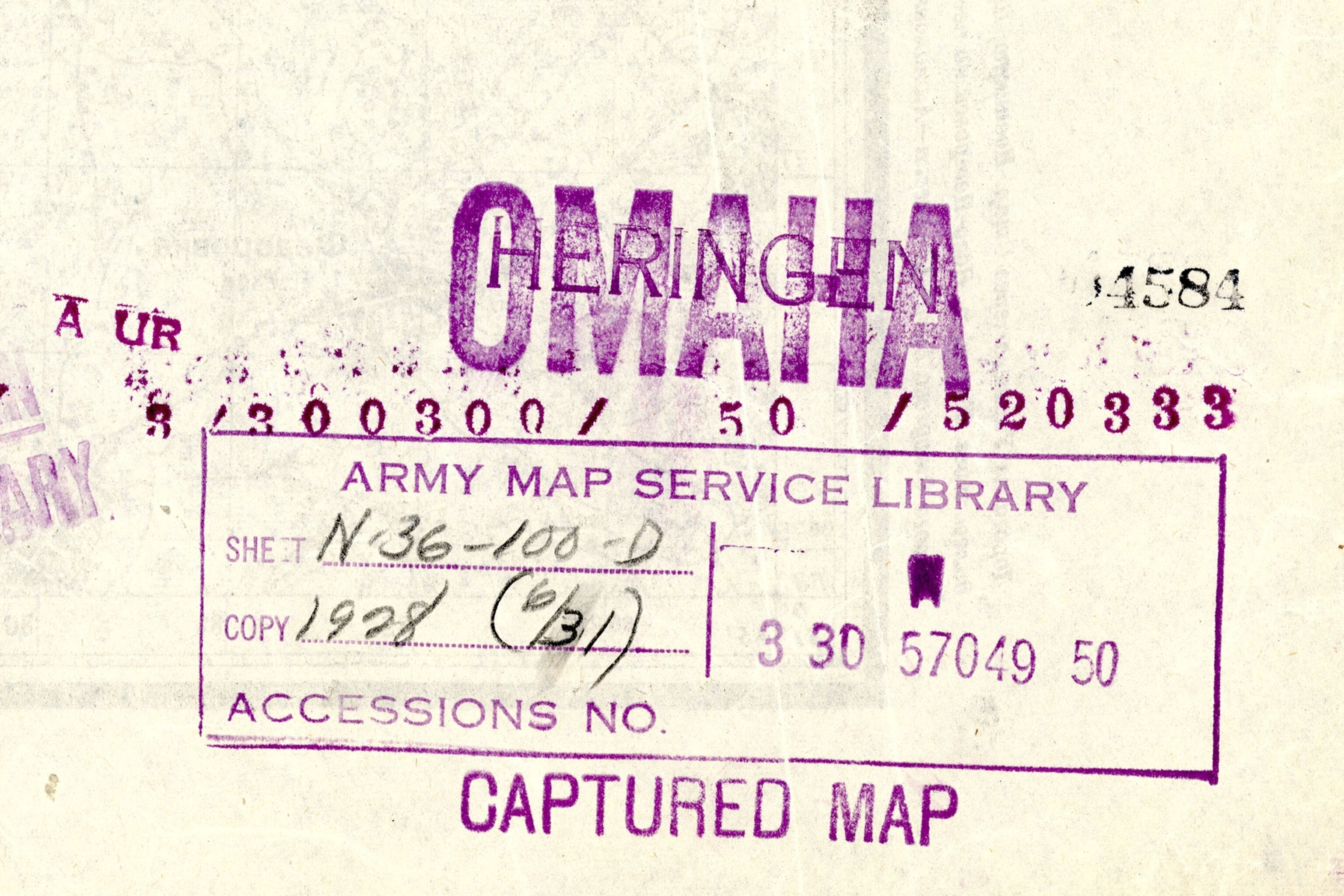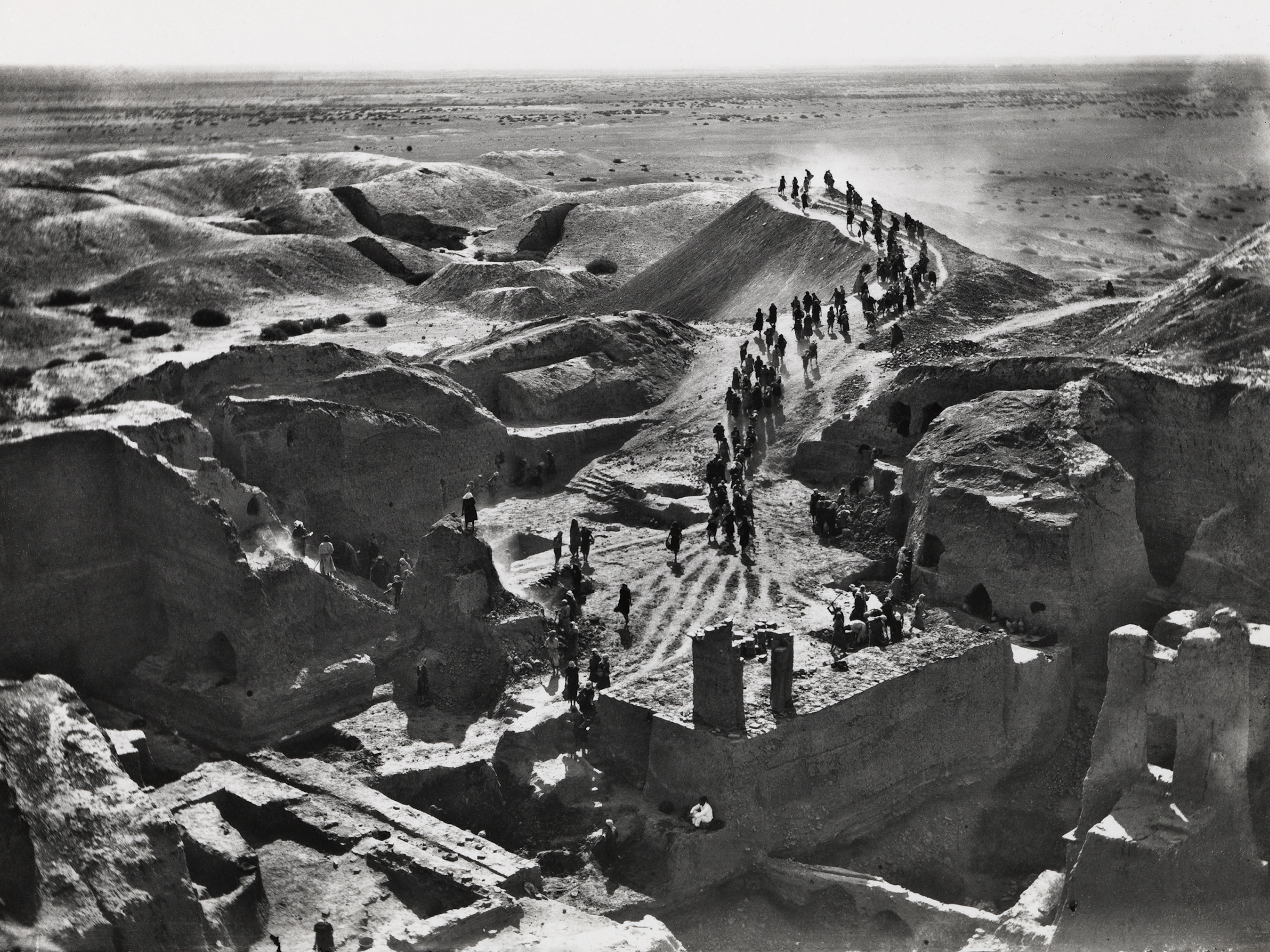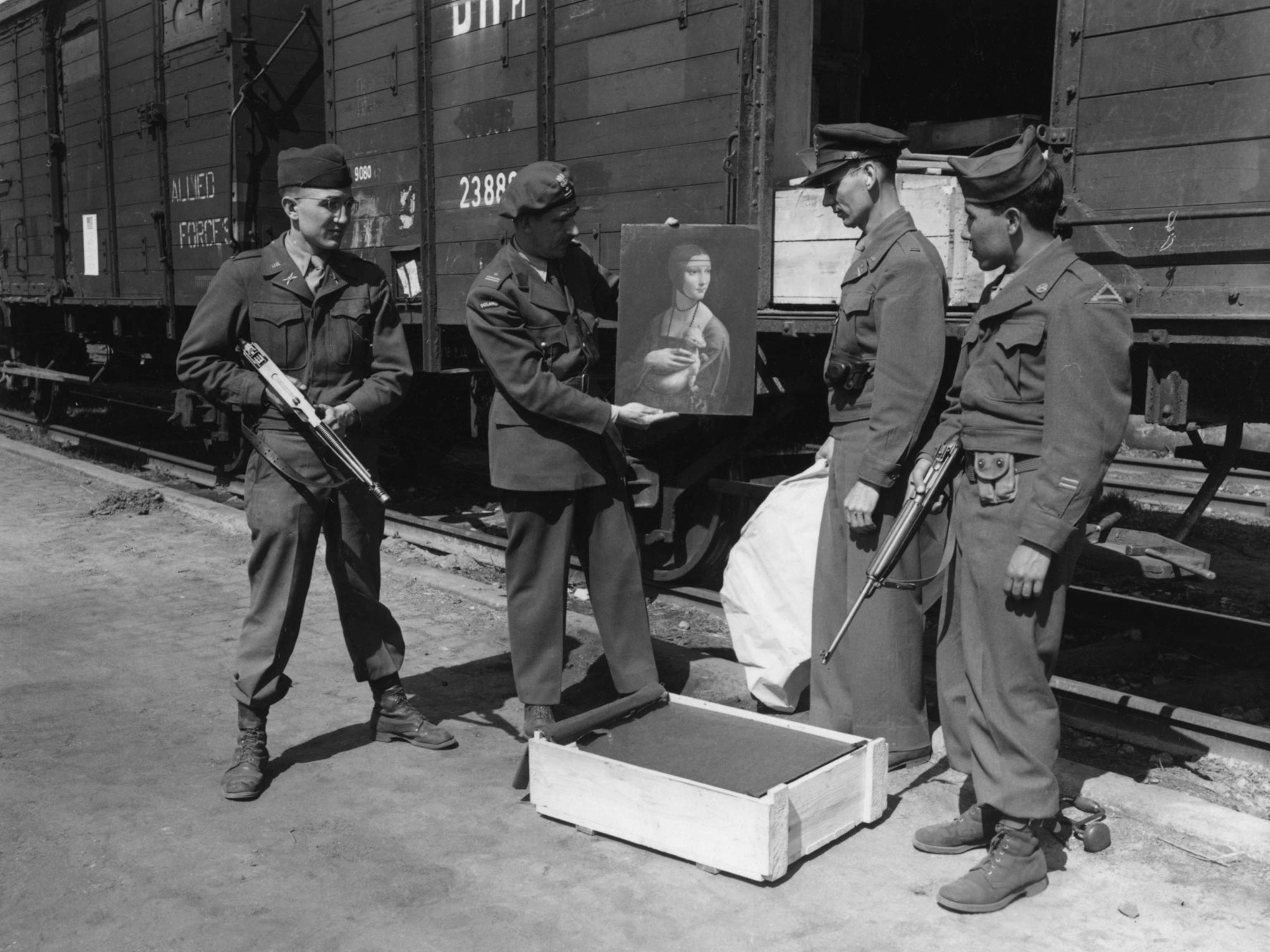
See the Classified Russian Maps That Fell Into Enemy Hands
Russian cartographers mapped their homeland in detail—making these secret charts invaluable to the Nazis, the U.S. Army, and the CIA.
Like stamps on a passport, the stamps on these captured Russian military maps tell a story—for the maps, it's often one of intrigue and globetrotting. Stamps emblazoned with national insignia reveal that some of these secret maps were captured by the Nazis and others by the U.S. Army during World War II. Several maps bear stamps suggesting they passed through the hands of multiple foreign military and intelligence agencies.
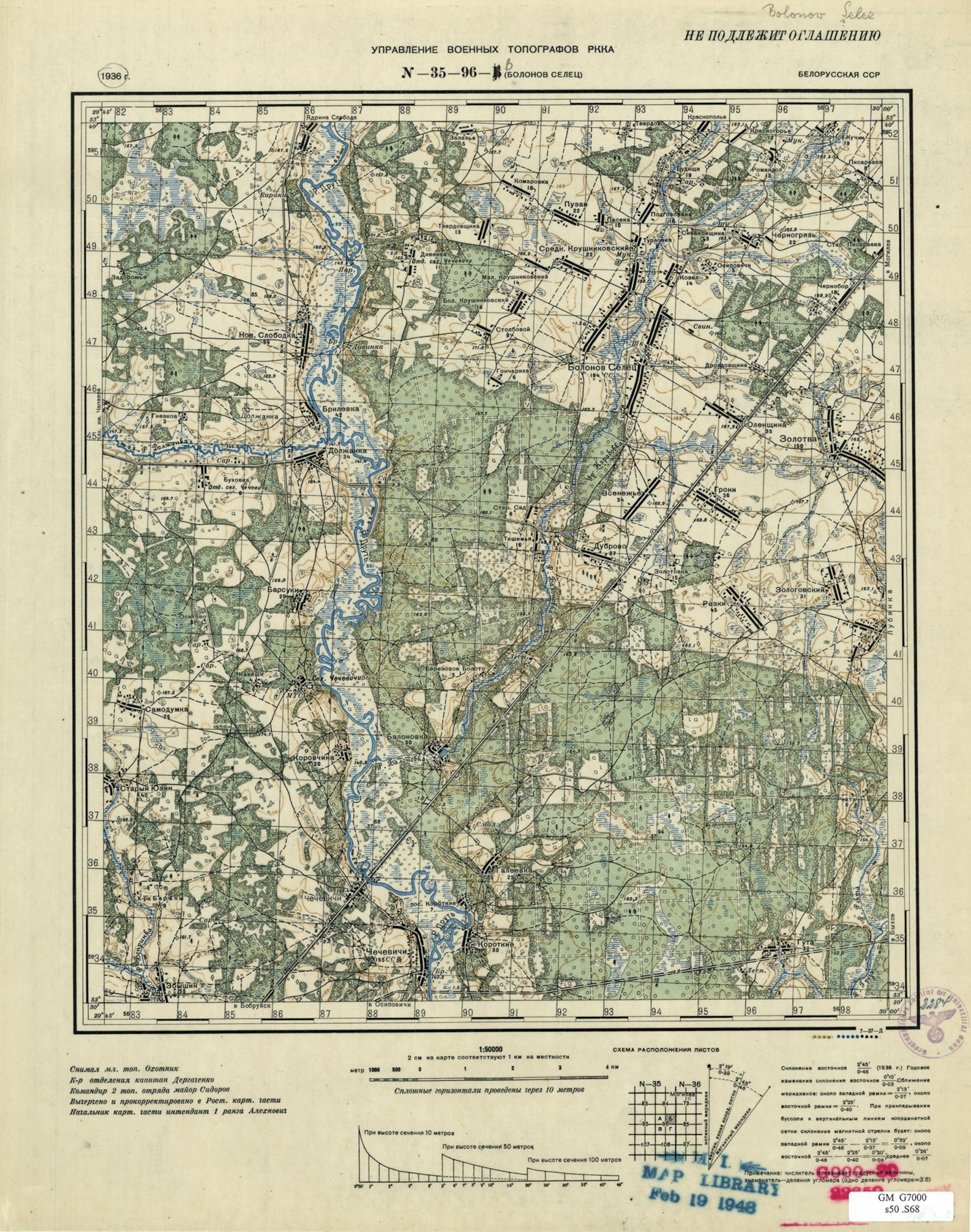
The maps are part of a collection of 4,000 Russian military maps at Indiana University. They were made between 1883 and 1947, and they were never meant to be seen by outsiders, says IU map librarian Theresa Quill. Many are marked “СЕКРЕТНО” (SECRET) or “НЕ ПОДЛЕЖИТ ОГЛАШЕНИЮ” (NOT SUBJECT TO DISCLOSURE) in the top right corner.
“A number of the maps from the 30s have a German stamp with a swastika on them, so we think they were captured in the field by German troops and then later captured in the field by American troops during World War II,” Quill says. “Many have Army Map Service stamps or CIA stamps on them as well.”
The maps would have provided valuable military intelligence for their foreign captors. Russian military cartographers are renowned for their skill, and their maps of Russia and Eastern Europe were unsurpassed in their detail and accuracy.
Most likely through many different routes, thousands of these maps ended up at the Library of Congress, which over the years has distributed copies to university map libraries around the country. “Not all of them have the same stamps, so it’s sort of like piecing together a mystery,” Quill says.
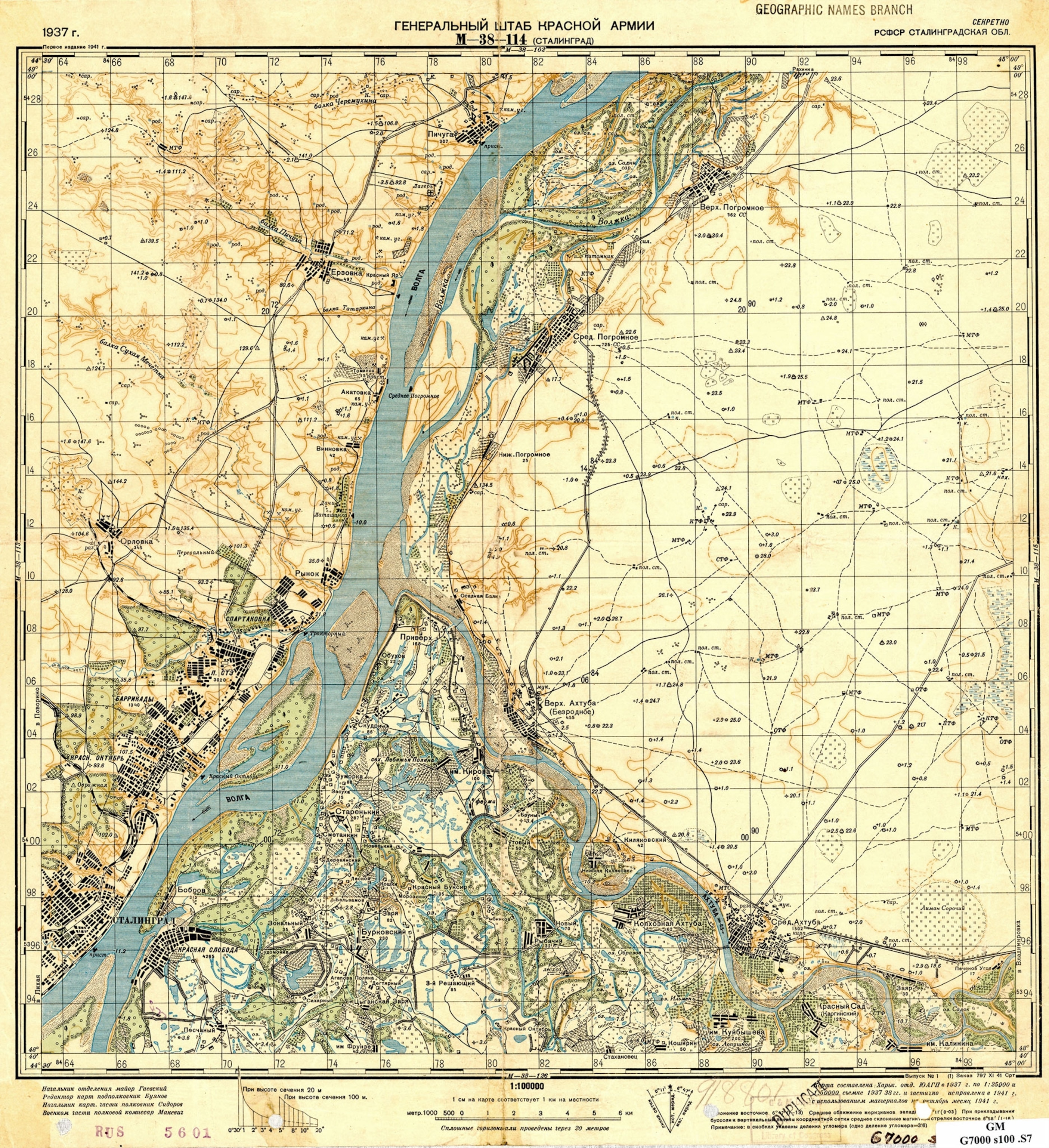
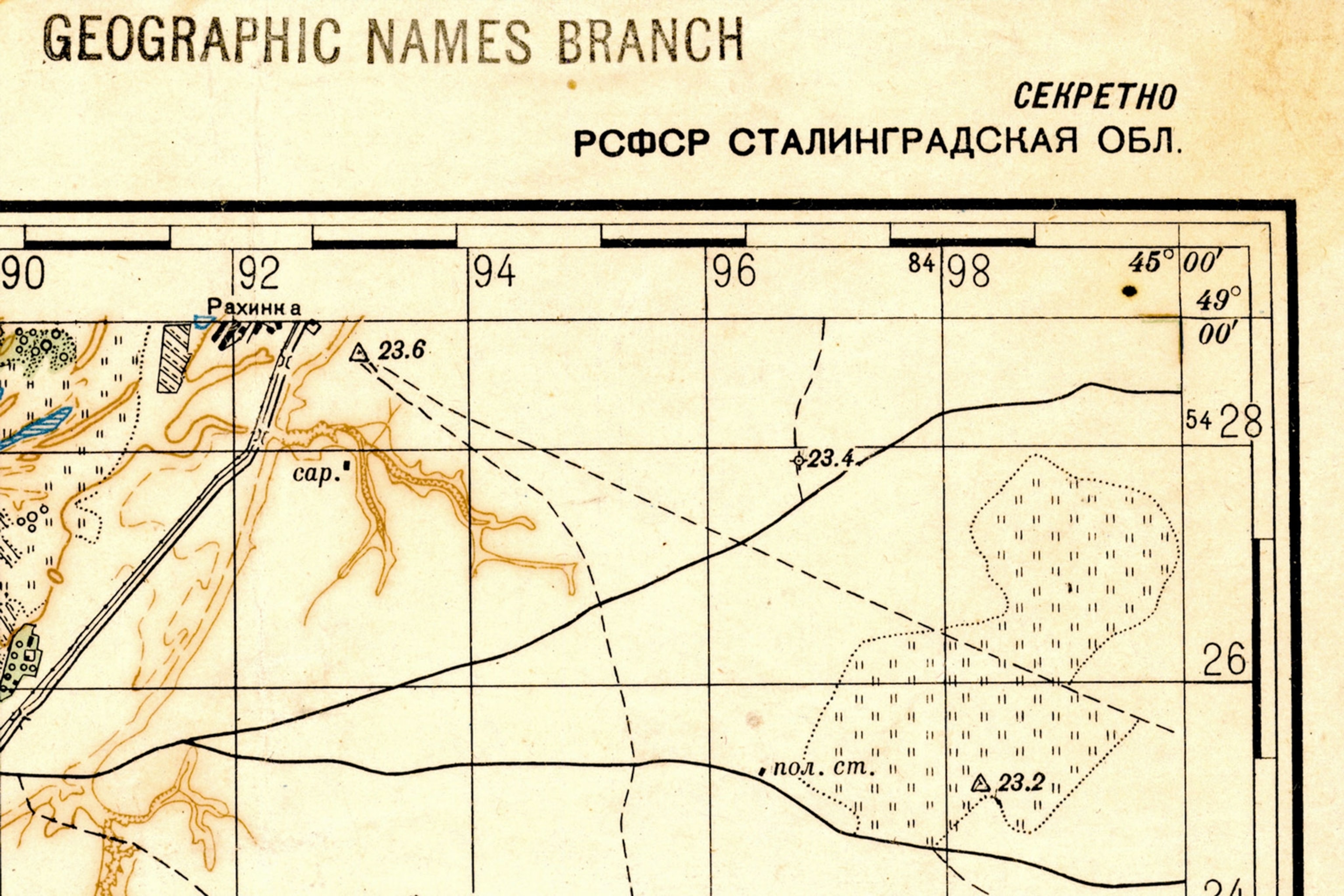
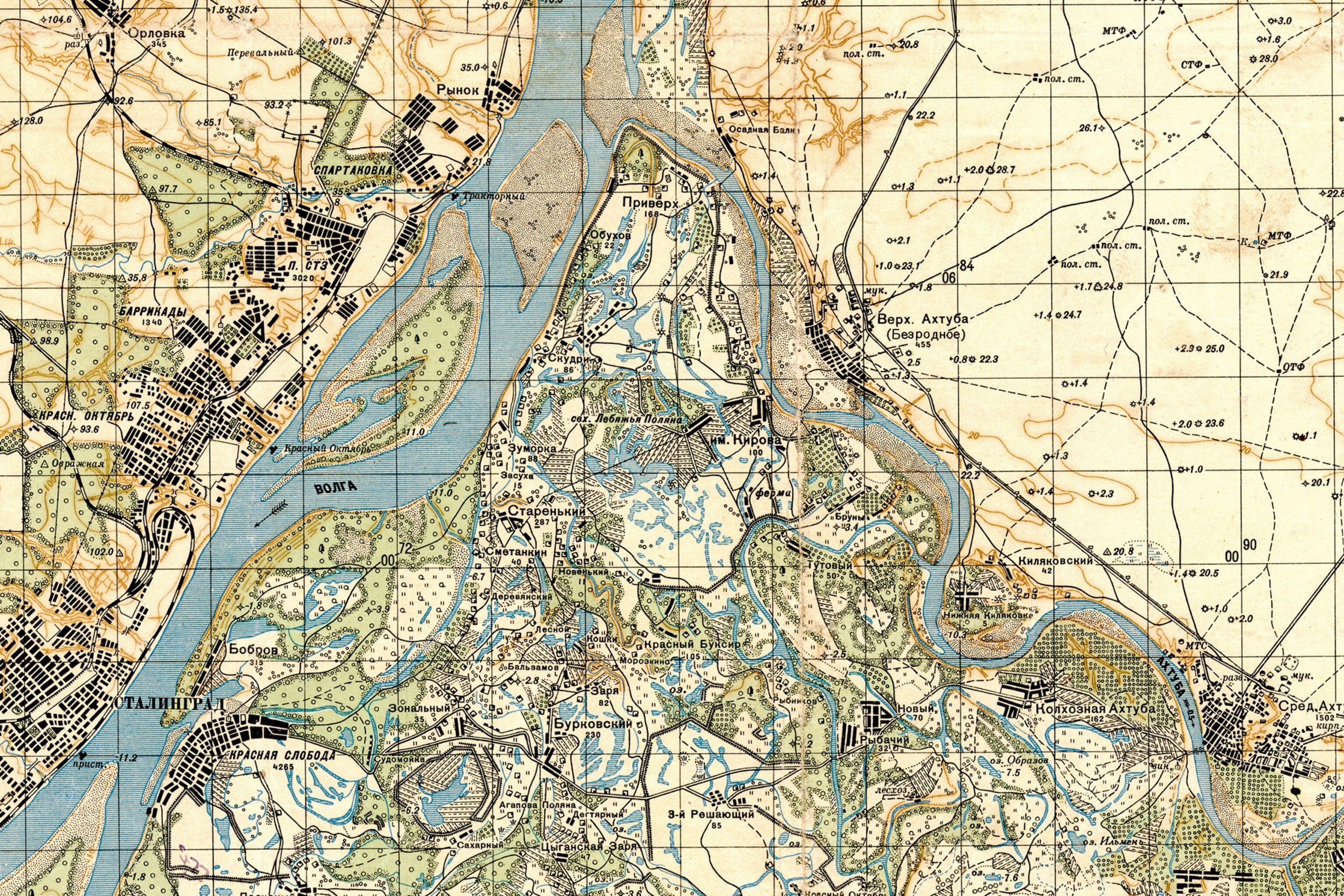
Most of the maps in the IU collection cover Poland, Belarus, Ukraine, the Baltic states and areas of western Russia. They provide a snapshot of a region that underwent tremendous change during the first half of the 20th century, making them a valuable resource both for historians and other scholars, Quill says. “These are still some of the most detailed and authoritative maps for that part of the world, particularly for that time frame.”
The maps have also been used by people trying to track down their family history, especially when they have roots in places that don’t appear on modern maps. “So many small villages that existed before World War II don’t exist anymore,” Quill says. In addition, for reasons that remain mysterious, the university’s website for the maps has also gotten a lot of traffic from an online forum in Russia for treasure hunters.
Quill and her IU colleague Michelle Dalmau recently won a grant to digitize and catalogue the Russian military maps to make them more accessible for researchers. The work will include documenting the stamps on each map.
The stamps alone don’t tell the whole story, though. In most cases there’s no way to tell when and where a given map was captured. It’s impossible to know just based on the stamps it bears whether a map was seized in the heat of battle or simply sat in a warehouse that changed hands at the end of the war. If only maps could talk.
For more about military maps, see our previous posts on Cold War Soviet military maps, captured Japanese military maps, and the CIA’s cartography center.
Greg Miller and Betsy Mason are authors of the forthcoming illustrated book from National Geographic, All Over the Map. Follow the blog on Twitter and Instagram.

